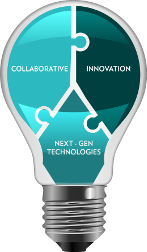Backwards Compatibility in Immersive Technologies

Lane Cooper
ROCKVILLE, MD.—The entertainment technology industry is off and running in an all-out race to bring the next generation of immersive experiences to market. Breakthroughs in technology for developing new audio, visual—and even haptic—experiences are being incorporated into the product and service roadmaps of the entire value chain, from content developers to consumer equipment manufacturers, network equipment manufacturers and professional equipment manufacturers. It is all very exciting. But an important question does need to be raised as the pace toward progress accelerates.
Should we—as a technology community—make a principled commitment to supporting backwards compatibility to deployed assets wherever it is feasible?
There are those who might argue that a “rear-guard action” to support currently deployed technologies diverts focus and energy from pursuing an aggressive “future-oriented” innovation agenda. This is certainly the view of organizations that have successfully pursued a strategy of “planned obsolescence,” which often requires consumers to make a complete break with assets they currently own to embrace the “next new thing.”
While this approach might make sense at a stand-alone product level, it is usually a poor idea when we set out to create fundamentally new markets that require the engaged involvement of a broad community of interest. The next generation of immersive entertainment offerings in general—and HDR in particular—offer a good case in point.

INNOVATION AS A TEAM SPORT
In this environment, progress is necessarily a team sport that requires a commitment to open innovation and collaboration; the objective is to rapidly create the ecosystem upon which consumers can enjoy their new—and existing—technological investments in products (devices) as well as services (content). In this context, backwards compatibility is an essential part of the open innovation picture.
Work is underway at standards-setting bodies around the world to define how new technologies will interact with consumers to deliver new and amazing experiences. It may be tempting to think that we can sweep aside existing investments in devices and infrastructures in one fell swoop. The reality, however, is that most consumers are not “early adopters” who will enthusiastically and immediately cutover to the next new thing. Most will migrate as the life-cycle of their technologies mature.
This means that most people will live in a hybrid environment in which several generations of devices will coexist. For instance, while a growing number of households have a 4K UHD/HDR TV that hangs off a next-generation set-top box in their living room, two or even three more flat screen HD/SDR sets are more than likely situated elsewhere in bedrooms and dens. This complexity is an important aspect of the global entertainment technology demand landscape.
This is why it is important to develop a sophisticated strategy for integrating backwards compatibility into the standards development process. It not only ensures technological interoperability, but also promotes a smoother, more inclusive and cost-effective migration to future experiences.
Lane Cooper is the editorial director of BizTechReports. Since 1987, he has covered the effect that emerging technologies have on the way people and organizations behave.
Get the TV Tech Newsletter
The professional video industry's #1 source for news, trends and product and tech information. Sign up below.
